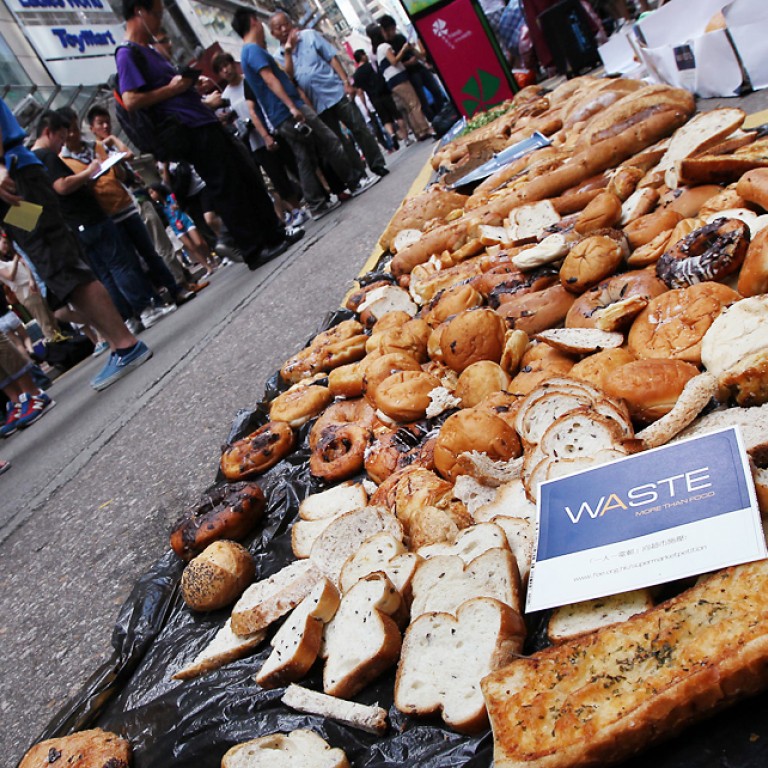
Hong Kong government to propose cutting food waste by 40 per cent by 2022
Use of organic treatment centres to ease burden on landfills, but education will play a vital role
A plan to slash food waste by up to 40 per cent in the next nine years will be set out in a paper to be released today.
The scheme will emphasise cutting waste at source and building treatment centres, although the government acknowledges that treatment is not a long-term solution.

Food waste at present accounts for a third of rubbish dumped in the city's landfills.
A source familiar with the plan said the target of a 40 per cent reduction by 2022 was in line with an objective of cutting overall waste per person by 40 per cent by the same year, set out in a blueprint released last year.
The pledge comes as environment officials prepare again to seek preliminary support from lawmakers on Monday for extending the Tseung Kwan O landfill and building a waste incinerator. The landfill plan was rejected by legislators last year, while the incinerator faces a court challenge.
Last year the city dumped an average 9,278 tonnes of waste a day in landfills with about 3,337 tonnes, or 36 per cent, being food waste. About 75 per cent of the food waste was thrown away by households. The share for businesses dropped from 29 to 24 per cent last year - about 800 tonnes a day.
The source said the food-waste reduction could be partly achieved by building more organic waste treatment centres. Two centres are planned - on North Lantau and in the northern New Territories - with a combined 500-tonne daily capacity.
But the source said there was a limit to the extent that end treatment could be replied upon.
"We cannot build these plants indefinitely as we must address the problem at its root," the source said, noting it was difficult to find sites for the plants, as there was competing demand for land, such as for housing.
Reduction at source would be the right direction and could be achieved with more publicity and education like the Food Wise programme launched last year that encouraged consumers to order, and food suppliers to provide, appropriate amounts of food.
The plan is not expected to support wider use of composting machines at housing estates, given their low capacity.
Another possible outlet for unwanted food will be donations to the needy or charity.
Friends of the Earth environmental affairs officer Celia Fung Sze-lai wants the government to enact a so-called Good Samaritan law on food donations.
"The law can give better protection to donors if there are problems with the food," she said, adding that such a law should be the responsibility of the Food and Health Bureau.
The plan will also address the 150 tonnes of yard waste - trees, leaves and other unwanted vegetation - produced daily.
It is expected that composting such waste will be promoted in public parks, while tree trunks and bigger pieces of vegetation could be recycled.
The source said the government would take the lead in using fewer unnecessary pot plants.
According to estimates by the government, the proposed incinerator off Shek Kwu Chau will cost HK$18.2 billion to build, 22 per cent more than the previous estimate made in 2011.
The cost of the Tseung Kwan O landfill extension has gone up by 5 per cent to HK$1.9 billion.
